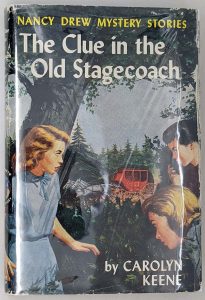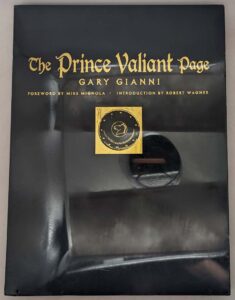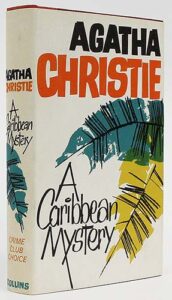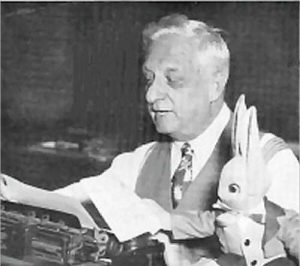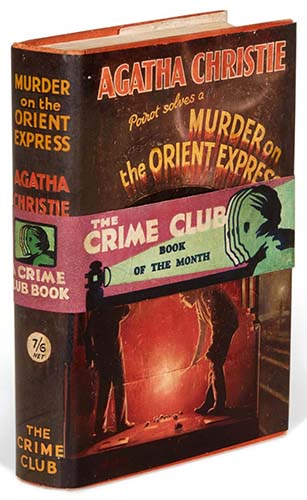
Murder on the Orient Express is a work of detective fiction by English writer Agatha Christie featuring the Belgian detective Hercule Poirot. It was first published in the United Kingdom by the Collins Crime Club on 1 January 1934. In the United States, it was published on 28 February 1934, under the title of Murder in the Calais Coach, by Dodd, Mead and Company. The UK edition retailed at seven shillings and sixpence (7/6) and the US edition at $2.00.
The elegant train of the 1930s, the Orient Express, is stopped by heavy snowfall. A murder is discovered, and Poirot’s trip home to London from the Middle East is interrupted to solve the case. The opening chapters of the novel take place in Istanbul. The rest of the novel takes place in Yugoslavia, with the train trapped between Vinkovci and Brod.
The US title of Murder in the Calais Coach was used to avoid confusion with the 1932 Graham Greene novel Stamboul Train, which had been published in the United States as Orient Express.
Advertisements in the back pages of the UK first editions of The Listerdale Mystery, Why Didn’t They Ask Evans, and Parker Pyne Investigates claimed that Murder on the Orient Express had proven to be Christie’s best-selling book to date and the best-selling book published in the Collins Crime Club series.
Plot Summary
[SPOILER ALERT]
After taking the Taurus Express from Aleppo to Istanbul, private detective Hercule Poirot arrives at the Tokatlian Hotel, where he receives a telegram prompting him to return to London. He instructs the concierge to book him a first-class compartment on the Simplon-route Orient Express service leaving that night. Although the train is fully booked, Poirot obtains a second-class berth through the intervention of friend, fellow Belgian, and passenger Monsieur Bouc, director of the Compagnie Internationale des Wagons-Lits railway. Other passengers include American widow Caroline Hubbard; English governess Mary Debenham; Swedish missionary Greta Ohlsson; American businessman Samuel Ratchett, with his secretary/translator Hector MacQueen, and his English valet Edward Henry Masterman; Italian-American car salesman Antonio Foscarelli; Russian Princess Natalia Dragomiroff and her German maid Hildegarde Schmidt; Hungarian Count Rudolph Andrenyi and his wife Elena; English Colonel John Arbuthnot; American salesman Cyrus B. Hardman; and Greek medical doctor Stavros Constantine.
Ratchett recognizes Poirot and asks for his protection as the former has been receiving death threats. Poirot, repulsed by Ratchett, refuses the case. Bouc has taken the last first-class cabin, but arranges to be moved to a separate coach and gives Poirot his space. The first night, Poirot observes some strange occurrences. Early in the morning, he is awakened by a cry from Ratchett’s compartment next door. Pierre Michel, the train’s conductor, knocks on Ratchett’s door, but a voice from inside responds, “Ce n’est rien. Je me suis trompé” (It is nothing. I was mistaken). Hubbard rings her bell and tells Michel a man passed through her room. When Poirot rings his bell for water, Michel informs him that the train is stuck in a snowdrift between Vinkovci and Brod before he hears a loud thump next door. He observes a woman in a red kimono going towards the washroom, then goes to sleep.
The next morning, with the train still stopped, Bouc informs Poirot that Ratchett has been murdered and the murderer is still aboard, having no way to escape in the snow. As there are no police onboard, Poirot takes up the case. With help from Constantine, Poirot examines Ratchett’s body and compartment, discovering the following: the body has twelve stab wounds, the window had been left open, a handkerchief with the initial “H”, a pipe cleaner, a flat match different from the ones Ratchett used, and a charred piece of paper with “member Daisy Armstrong” written on it.
The piece of paper helps Poirot work out the murderer’s motive. Many years earlier, American gangster Lanfranco Cassetti kidnapped three-year-old Daisy Armstrong. Cassetti collected a significant ransom from the wealthy Armstrong family weeks later, then revealed he had killed the child within one hour of kidnapping her. Sonia Armstrong, Daisy’s mother, who was pregnant with her second child upon hearing the news, went into premature labor and died, along with the baby. Her grieving husband, Colonel Armstrong, shot himself, and Daisy’s French nursemaid, Susanne, was accused of aiding Cassetti and committed suicide, only to be found innocent afterwards. Cassetti escaped justice through corruption and legal technicalities, and fled the country. Poirot concludes that “Ratchett” was actually Cassetti. Whoever had said “Ce n’est rien. Je me suis trompé.” must not have been Ratchett, as Ratchett did not speak French.
As Poirot begins interviewing everyone on the train, he discovers MacQueen is directly involved as he knows about the Armstrong note and believed it was destroyed and that Hubbard believes the murderer was in her cabin. While the passengers and Pierre all provide suitable alibis for each other, Poirot notes that some of them observed the woman in the red kimono walking down the hallway on the night of the murder. However, no one admits to owning a red kimono. Hubbard had Ohlsson lock the communicating door between her compartment and Cassetti’s, which invalidates her story of the man in her compartment, and Schmidt bumped into a stranger wearing a Wagons-Lits uniform. Miss Debenham inadvertently reveals she has been to America, contrary to her earlier statements, and Ohlsson shows much emotion when the subject of Daisy is brought up, causing further suspicion. Arbuthnot remarks that Cassetti should have been found guilty in a second trial instead of murdered, and Hardman admits he is actually a MacNeil Agency detective who was asked to watch out for an assassin that was stalking Cassetti.
While inspecting the passengers’ luggage, Poirot is surprised to find the label on Countess Andrenyi’s luggage is wet and that her passport is damaged, Schmidt’s bag contains the uniform in question, and Poirot’s own luggage contains the red kimono, recently hidden there. Hubbard herself finds the murder weapon hidden in her sponge bag. Poirot meets with Constantine and Bouc to review the case and develop a list of questions. With these and the evidence in mind, Poirot thinks about the case, going into a trance-like state. When he surfaces from it, he deduces the solution.
He calls in the suspects and reveals their true identities and that they were all connected to the Armstrong tragedy in some way, gathering them in the dining car for the second solution. Countess Andrenyi (nee Goldenberg) is Helena, Daisy’s aunt, who was a child herself at the time of the tragedy. Rudolph, her loving husband, smudged her luggage label and obscured her name to conceal her identity. Debenham was Helena and Daisy’s governess; Foscarelli was the Armstrongs’ chauffeur and a suspect in the kidnapping; Masterman was Col. Armstrong’s valet; Michel is Susanne’s father and the person who procured the false second uniform; Hubbard is actually famous actress Linda Arden, Daisy’s grandmother and Sonia and Helena’s mother; Schmidt was the Armstrongs’ cook; and Ohlsson was Daisy’s nurse. Princess Dragomiroff, in reality Sonia’s godmother, claims the monogrammed handkerchief, saying that her forename is Natalia and the “H” is actually a Cyrillic letter “N”. Arbuthnot is there on Debenham’s behalf and his own, as he was a personal friend of Colonel Armstrong. Hardman is an ex-policeman who admits he was in love with Susanne, and MacQueen, who had feelings for Sonia, was the son of the lawyer who represented the Armstrongs. The only passengers not involved in the murder are Bouc and Constantine, both having slept in the other coach, which was locked.
Poirot propounds two possible solutions. The first is that a stranger boarded the train when it stopped at Vinkovci, killed Cassetti as a result of a Mafia feud, and disembarked at great risk through the snow. The second is that all the clues except the handkerchief and pipe cleaner were planted and that Michel and all the passengers in the coach except Helena stabbed Cassetti, acting as their own jury. Arden admits that the second solution is correct, but offers to take responsibility as she was the mastermind. In response, Bouc and Constantine accept the first solution and relay this to the police, as Poirot retires from the case.
Publication history
- 1934, Collins Crime Club (London), 1 January 1934, Hardcover, 256 pp.
- 1934, Dodd Mead and Company (New York), 1934, Hardcover, 302 pp.
- ca. 1934, Lawrence E. Spivak, Abridged edition, 126 pp.
- 1940, Pocket Books (New York), Paperback, (Pocket number 79), 246 pp.
- 1948, Penguin Books, Paperback, (Penguin number 689), 222 pp.
- 1959, Fontana Books (Imprint of HarperCollins), Paperback, 192 pp.
The story’s first true publication was the US serialisation in six instalments in the Saturday Evening Post from 30 September to 4 November 1933 (Volume 206, Numbers 14 to 19). The title was Murder in the Calais Coach, and it was illustrated by William C. Hoople.
The UK serialisation appeared after book publication, appearing in three instalments in the Grand Magazine, in March, April, and May 1934 (Issues 349 to 351). This version was abridged from the book version (losing some 25% of the text), was without chapter divisions, and named the Russian princess as Dragiloff instead of Dragomiroff.
Murder on the Orient Express – First Edition Book Identification Guide
The books are listed in the order of publication. While the majority of Agatha Christie’s books were first published in the UK. There are many titles that were first published in the US. The title of the book may differs from the UK edition in some cases.
| Year | Title | Publisher | First edition/printing identification points |
|---|---|---|---|
| 1934 | Murder on the Orient Express | William Collins & Sons, London, [1934] | First edition. "Copyright, 1934" stated on the copyright page. No statement of later printings Orange or green cloth cloth lettered in black. Issued with a wrap around band. Price 7/6. |
| 1934 | Murder in the Calais Coach | Dodd, Mead & Co, NY, 1933 | First American edition. Date on the title & copyright page matches. No statement of later printings. Yellow/tan cloth lettered in black. NOTE: The book was issued in February 1934, but the copyright date states 1933. Price $ 2.00. |
Note about Book Club Editions (BCE) and reprints:
UK: You can see statements of later reprint dates or of book club on the copyright page.
US: The US reprint publishers usually use the same sheets as the first edition and are harder to identify by looking at the title page or the copyright page. One may identify a BCE by looking at the DJ, which doesn’t have a price on top of the front flap and a “Book Club Edition” imprint at the bottom. If the dust jacked is clipped at both the top/bottom of the front flap. You can safely assume it’s a BCE . If the book is missing the dust jacket. Later BCE editions can be identified by its plain boards, while first printings are issued in quarter cloth.
Please refer to the gallery for detailed images of true first edition bindings and dust jackets.
Murder on the Orient Express – First Edition Dust Jacket Identification Guide
First edition bindings and various dust jacket printings identification.



